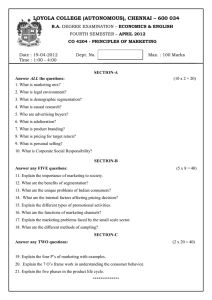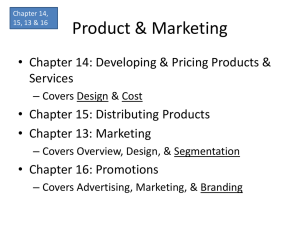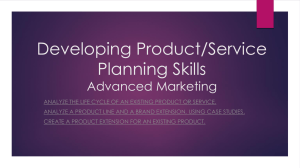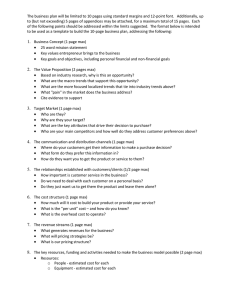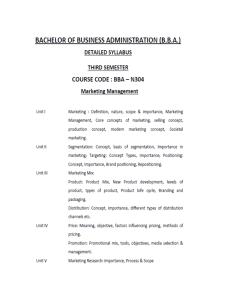Marketing 325 Exam #2 Study Guide
advertisement
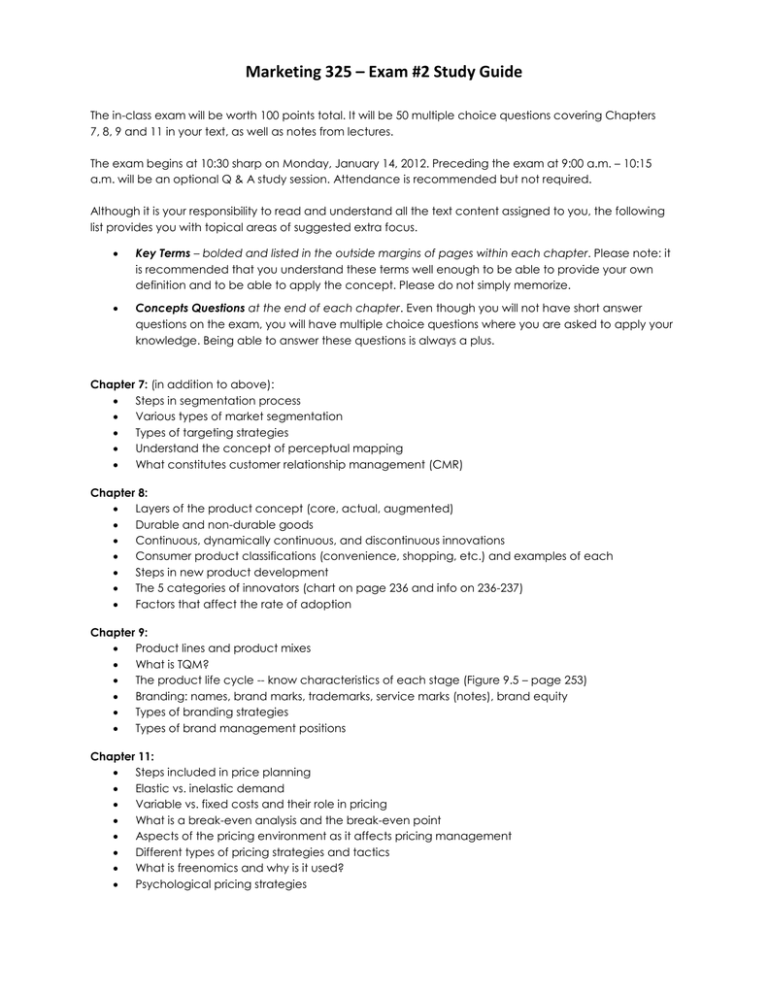
Marketing 325 – Exam #2 Study Guide The in-class exam will be worth 100 points total. It will be 50 multiple choice questions covering Chapters 7, 8, 9 and 11 in your text, as well as notes from lectures. The exam begins at 10:30 sharp on Monday, January 14, 2012. Preceding the exam at 9:00 a.m. – 10:15 a.m. will be an optional Q & A study session. Attendance is recommended but not required. Although it is your responsibility to read and understand all the text content assigned to you, the following list provides you with topical areas of suggested extra focus. Key Terms – bolded and listed in the outside margins of pages within each chapter. Please note: it is recommended that you understand these terms well enough to be able to provide your own definition and to be able to apply the concept. Please do not simply memorize. Concepts Questions at the end of each chapter. Even though you will not have short answer questions on the exam, you will have multiple choice questions where you are asked to apply your knowledge. Being able to answer these questions is always a plus. Chapter 7: (in addition to above): Steps in segmentation process Various types of market segmentation Types of targeting strategies Understand the concept of perceptual mapping What constitutes customer relationship management (CMR) Chapter 8: Layers of the product concept (core, actual, augmented) Durable and non-durable goods Continuous, dynamically continuous, and discontinuous innovations Consumer product classifications (convenience, shopping, etc.) and examples of each Steps in new product development The 5 categories of innovators (chart on page 236 and info on 236-237) Factors that affect the rate of adoption Chapter 9: Product lines and product mixes What is TQM? The product life cycle -- know characteristics of each stage (Figure 9.5 – page 253) Branding: names, brand marks, trademarks, service marks (notes), brand equity Types of branding strategies Types of brand management positions Chapter 11: Steps included in price planning Elastic vs. inelastic demand Variable vs. fixed costs and their role in pricing What is a break-even analysis and the break-even point Aspects of the pricing environment as it affects pricing management Different types of pricing strategies and tactics What is freenomics and why is it used? Psychological pricing strategies

